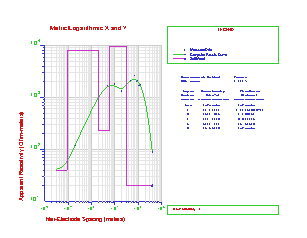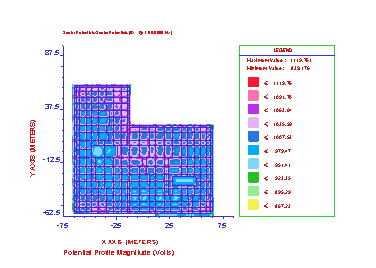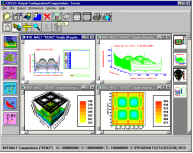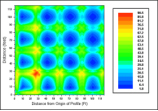Earthing Grid Designing


Earthing Grid Designing and Safety analysis with CDEGS software
EDS provides services for the designing and safety analysis of earthing grids as per IEEE-80 standard with CDEGS engineering software. CDEGS (Current Distribution, Electromagnetic Interference, Earthing and Soil Structure Analysis) is a powerful and high precision software package dedicated to soil resistivity and earthing safety analyses that can go well beyond the assumption of conductor equipotentiality. The CEDGS software package provides accurate results for large earthing systems, even in extreme conditions of soil resistivity.
We have worked with scores of clients across the sectors and have rich experience in dealing with a variety of issues in this field. We are passionate about providing our customers with innovative services which deliver tangible benefits for their businesses and installations.
Comprehensive Earthing Grid Designing with CDEGS Design Software
Why do we need designing software for earthing?
 The design of earthing systems is often based on thumb rules, excel based calculations, rough guidelines derived from engineering experience, which can vary greatly from person to person. It is frequently a trial-and-error procedure and can be quite time-consuming; also, there are no concrete results, which can be analyzed.
The design of earthing systems is often based on thumb rules, excel based calculations, rough guidelines derived from engineering experience, which can vary greatly from person to person. It is frequently a trial-and-error procedure and can be quite time-consuming; also, there are no concrete results, which can be analyzed.
 It is nearly impossible to keep check and balances in designing an earthing system due to the complexities of calculation. This makes software more essential.
It is nearly impossible to keep check and balances in designing an earthing system due to the complexities of calculation. This makes software more essential.
Our international standard design capability is supported by advanced modelling software from SES Technologies, Canada and on-site measurement teams who provide a range of services, from routine maintenance surveys to advanced measurements using high-end instruments.
The engineers at EDS can help you plan and execute an electrical earthing design that will provide the best performance ground system available, within the constraints of your available area, budget, and equipment being protected. We use below mentioned specialized designing software to build an electrical earthing system that will meet your performance objectives.
- Soil layers resistivity analysis with CDEGS-RESAP engineering software (multilayer)
- Advanced earthing designing using CDEGS-MALZ engineering software
CDEGS - RESAP | Multilayer Soil Resistivity Analysis
Soil modelling is one of the most crucial aspects in electrical earthing system design and safety analysis. Soil resistivity modeling takes the guesswork out of electrical earthing design. In general, the soil resistivity changes both in horizontal and vertical direction. The multilayer soil model is often the most suitable for earthing system analysis. The number of required layers is in general site-dependent, the simplistic double layer soil model is adequate only in about the 20% of cases while in the remaining 80% of cases a model with three or more layers is required.
 Correctly interpreted soil structures are essential for the analysis of earthing systems. A more accurate representation of the actual soil structure can be obtained by use of CDEGS-RESAP engineering software. The apparent resistance (V/I) data values were entered as input to the RESAP to determine equivalent horizontally multi-layered soils based on the site measurements. RESAP compares field data to apparent resistivities produced by different soil models, and automatically determines a soil structure yielding a closely matching electric surface response.
Correctly interpreted soil structures are essential for the analysis of earthing systems. A more accurate representation of the actual soil structure can be obtained by use of CDEGS-RESAP engineering software. The apparent resistance (V/I) data values were entered as input to the RESAP to determine equivalent horizontally multi-layered soils based on the site measurements. RESAP compares field data to apparent resistivities produced by different soil models, and automatically determines a soil structure yielding a closely matching electric surface response.
CDEGS - MALZ | Earthing Grid Designing & Analysis Software
 CDEGS - MALZ is the world’s leading software for earthing system design and safety analysis. Soil resistivity data is inputted into RESAP and the earthing system design is completed using MALZ modules. Earthing impedance, Ground Potential Rise and Step/Touch voltages are computed to verify the safety of the earthing system.
CDEGS - MALZ is the world’s leading software for earthing system design and safety analysis. Soil resistivity data is inputted into RESAP and the earthing system design is completed using MALZ modules. Earthing impedance, Ground Potential Rise and Step/Touch voltages are computed to verify the safety of the earthing system.
With MALZ we can analyze the frequency domain performance of buried bare and coated conductor networks and calculates the following quantities:
- Earthing gird impedance, GPR, safe touch/step voltages
- Longitudinal and leakage currents and the potential distribution in the conductor network.
- Potential, electric field and conductive current density in the soil or at the earth's surface.
The end results are bespoke designs, which are based on EDS extensive experience of earthing system designing.
